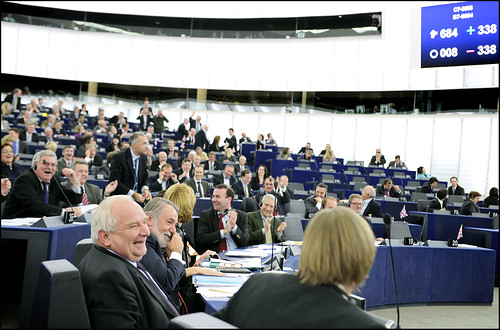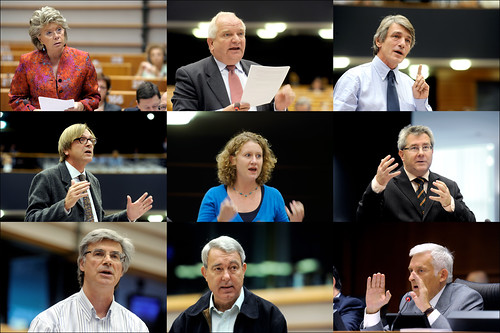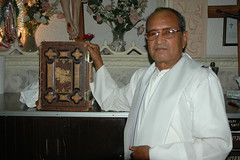Article
Constitutional Validity of Narco-Analysis Test
Prepared by: Urja. B. Dave
Nirma University of Science and Technology
Institute of Law
Ahmedabad
Constitutional validity of Narco Analysis Test
Introduction:
Development of new tool of investigation has led to the emergence of scientific tools of interrogation and criminal investigation like NARCO ANASLYSIS TEST. However, its application must be assessed objectively so that it can be replaced by existing conventional methods of interrogation. Narco analysis test can be effective as an alternative to barbaric third degree methods. Care should be taken that it is not misused or abused by investigation officer and should be correlated with corroborative evidence. Such test is a result of advancement not only in Forensic science but also in Science and Technology. It often Raises doubts regarding basic human rights and about their reliability.
Legal questions are raised bout validity with some of them holding in the light of legal Principles and Perceptive and some others rejecting it as a violence of constitutional Provisions.
Historical perspective:
In 1922, Robert House, an obstetrician from Texas, experiment the use of narco analysis in the interrogation of suspected criminals. He arranged to interrogate two Prisoners in the Dallas country jail by using Scopolamine1, whose guilt seemed clearly confirmed. Both the prisoners denied the crimes for which they have been detained and upon trial were [1]found not guilty. After the successful experimentation, House concluded that an accused under the influence of scopolamine could not lie.
The Narco analysis during past was used only by psychiatrists to find out the psychological reality. Nevertheless, the application of the Technique was adopted frequently in the criminal investigation from early 1950s.
Narco analysis was rather unheard in India until recent past. It was first used in 2002 in the Godhra Carnage Probe. Narco analysis test once again is in the limelight in the contest of Aarushi Murder case. It was also used in Nithari village serial killings case, Telgi Stamp paper Scam, Arun Bhatt Kidnapping case in Gujarat, and others.
What is Narco Analysis Test?
The term Narco-Analysis is derived from the Greek word “narke” meaning anesthesia and is used to describe a diagnostic and psychotherapeutic technique that uses psychotropic drugs, particularly barbiturates, which acts as Central Nervous System depressants, and by virtue of this, they produce a wide spectrum of effects from mild sedation to anesthesia.
Narco-Analysis tries to recall repressed materials. The therapist gives post-hypnotic suggestion to patient. Repressed material is recalled during influence of the drug and repressed conflict of the patient is located and cured.
Procedure of Narco-analysis test:
The narco analysis test is conducted by mixing 3 grams of sodium penthol or sodium amytal dissolved in 3000ml of distilled water. Narco test refers to the practice of administering barbiturates or certain other chemical substances, most often penthol sodium, to lower a subject’s inhibition, in the hope that the subject will more freely share information, a person is able to lie by using his imagination. Experts inject a subject with hypnotics like sodium penthol or sodium amytal under controlled circumstances of the laboratory. The dose is dependent on the person’s sex, age, health and physical condition. The subject, which is put in a state of Hypnotism, is not in a position to speak up on his own but can answer specific but simple questions after giving some suggestion. The answers are believed to be spontaneous as a semi-conscious person is unable to manipulate the answers. Wrong dose can send the subject into coma or even result in death.
The subject is then interrogated by the investigating agencies in the presence of doctors. The revelations made during this stage are recorded both in video and audio cassettes. The report prepared by the experts is what is used in the process of collecting evidence.
The procedure is conducted in government hospital after a court order is passed instructing the doctors or hospital authorities to conduct the test. Personal consent of the subject is also required.
It is established that in of the total number of the individuals subjected for narco analysis are found to be innocent. Therefore this technique not only helps to identify the real perpetrator of crime, conspiracies, displacement of evidentiary items etc. but also to identify the innocents within a short period.
Pros and Cons of Narco Analysis Test:
According to police Narco analysis is a scientific tool of investigation, it helps a lot in crime prevention and detection. It is definitely considered better than third degree treatment of the police to extract truth from an accused.
It is not possible to determine the correct dose of the drug, which varies according to the physical constitution of the subject, but also his mental attitude and will power. A wrong dose can send the subject into coma or even cause death, thus resulting in legal complication. The person to administer them has to be highly qualified physician.
The test can be misused by suggestive questioning by the investigating agencies. Psychiatrists hold that some individuals are suggestible even while fully conscious, meaning they can be made to believe events that never actually happened. Therefore, while patients under narco analysis may find it difficult to lie consciously, they can certainly say things that are on the surface on their mind. The patient may say things that he wished were true and not that are necessarily true.
Constitutional Validity:
Some legal experts consider that narco analysis test during the investigation is a blatant violation of Art. 20(3) of our constitution. Art. 20(3) says, “No person accused of any offence shall be compelled to be witness against himself”
The conditions for the applicability of Art. 20(3) are:
There must be a person accused of any offence. There must be compulsion against such person. Such compulsion must be to be witness and Such person must be compelled to be a witness against himself, in other words to incriminate himself by his evidence.
All these four ingredients must be necessarily co exist before the protection of Art. 20(3) can be claimed. If any of these ingredients is missing Art. 20(3) cannot be invoked.
The controversy regarding test is against the fundamental right is due to the modus operandi of the test. In the test, the drug is administered which suppress the reasoning power without affecting the memory and speech.
The test also goes against the maxim “Nomo tenetur se Ipsum Accusare” which means no man not even the accused himself can be compelled to answer any question, which may tend to prove him guilty of a crime of which he has been accused. The previously mentioned principle of the maxim is also incorporated in the section 161(2) of the code of criminal procedure.
Sec. 161(2) of Cr. P. C says that such person shall be bound to answer truly all questions relating to such case put to him by such officer, other than the questions the answer to which would have a tendency to expose him to a criminal charge or to a penalty or forfeiture.
The most important case in this regard is that of Nandini Satpathi v. P. L. Dani (AIR 1978 SC 1025).
Facts: Nandini Satpathi was a former chief minister of Orissa, against whom a case was registered under the Prevention of Corruption Act. She was asked to appear before the Dy. S. P for questioning. The police wanted to interrogate her by giving her a string of questions in writing. She refused to answer the questions because it was a violation of her fundamental right against the self-incrimination.
In the previously mentioned case Krishna Iyer, J. has widened the scope of the protection. The issue before the court was whether a potential candidate for accused can avail of the privilege. It was held that the right extends to witness & the accused alike. The expression ‘accused of any offence’ must mean formally accused in presenti not in futuro. It applies at every stage at which furnishing of information & collection of material takes place.
Thus, Right to Silence has been granted to the accused by virtue of the pronouncement in the case of Nandini Satpathi. No one can forcibly extract statements from the accused, who has right to remain silent during the course of interrogation (investigation). By administration of narco analysis test, forcible intrusion into one’s mind is being restored to, thereby nullifying the validity & legitimacy of the Right to Silence.
It is an accepted legal position that the protection of Art. 20(3) do not extend to compulsory production of material or compulsion to give specimen signatures, finger impression or blood samples. However, Narco analysis is still different & clearly distinguishable from giving specimen signatures or blood samples or even taking a polygraph test because except in case of a narco analysis, the accused retains his control over what he is doing or saying & at no point of time can he be compelled to disclose any such information that he wants to keep to himself. Giving blood sample or specimen signatures is much like allowing the investigation officer to search the residence of the accused & go through his belongings in search of evidence. That is very much permissible.
The legal & constitutional infirmity of narco-analysis lies in the fact that it takes away one’s control on one’s mind, which brings it in category of mental torture & torture of all kind fall foul with Art.21.
Now the question may arise that the so-called ‘consent form’ sign by the accused supplies the requirement of the ‘voluntary discloser’. It is incorrect as in the court mandated narco analysis, the ‘consent form’ has absolutely no relevance because the compliance of a judicial order passed by a competent authority to compel obedience. Therefore, if a competent court orders narco analysis the order has to comply with, unless it is challenged by the superior court. The accused has no choice against the court order. Therefore, there is ‘compulsion’, there is ‘testimony’, and it is surely ‘testimony by compulsion’. However, compulsion per se is not illegal. Therefore, the only one question is whether the compulsion is legally sound.
The Madras High Court in Dinesh Dalmia v. State of Madras held that subjecting an accused to undergo such scientific tests would not amount to breaking his silence by force. He may be taken to the laboratory for such test against is quite voluntary. Therefore, such process does not amount to compelling a witness to give evidence against him. When the human rights activist adopt third degree methods to extract information from the accused, it is high time the investigating agency took recourse to scientific methods of investigation.
The Bombay High Court in Abdul Karim Telgi case held that “certain physical tests involving minimal bodily harm” like narco analysis test and brain mapping does not violate Art. 20(3) and did not compromise the constitutional protection against self-incrimination. The important point is that the confession or statement made during narco analysis is not admissible as evidence in a court of law, and that is the reason why the protection against self-incrimination under Art. 20(3) is not breached. In the above-mentioned case Bombay High Court seems to have held that nacro analysis is permissible because it involves “minimal bodily harm”, which implies that all such methods of extracting information that inflict minimal bodily harm are legally permissible.
However, the final judicial pronouncement on the constitutional status of narco analysis is yet to come. In 2006, Supreme Court of India stayed the order of a metropolitan judge to conduct nacro analysis on K. Venkateswara Rao in the Krushi cooperative Urban Bank case. The issue required to be settled by a court decision because Mr. Rao refused to sign the consent form & hence the Forensic Laboratory at Gandhinagar declined to conduct a narco analysis test without a duly filled and signed consent form. The Supreme Court verdict is still awaited.
Conclusion:
Law is a living process, which changes according to the changes in society, science, and ethics and so on. Law is not static but it is dynamic. The legal system should imbibe developments and advances that take place in science as long as they do not violate fundamental legal principles and are for the good of the society. The criminal justice system should be based on just and equitable principles. The issue of using narco analysis test as a tool of investigation in India has been widely debated. The extent to which it is accepted in our legal system and our society is something, which will be cleared in the near future. In a situation where narco analysis is gaining judicial acceptances and supports despite being an “unreliable and doubtful” science, we have to seriously rethink about its legal and constitutional validity from human rights perspective.
The criminal justice system is based on the principle that “let hundred guilty go unpunished rather than an innocent is punished”. To uphold this principle narco analysis test has to be made compulsory in cases where the interest of public is involved. For this purpose, it is necessary to amend or to enact new laws for that purpose so that justice may be delivered in a fair manner.
[1] Scopolamine is also popularly known as tooth serum.









